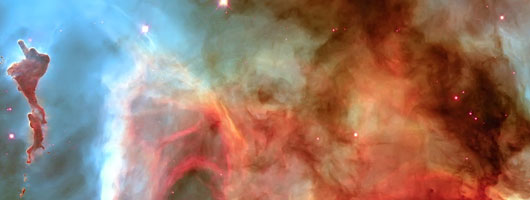Missions and Projects
What we do

The High Energy Astrophysics Group has been producing space flight instruments for almost 50 years. Early balloon and space flight missions emphasized sodium iodide detectors of X-rays and gamma rays. They quickly evolved into the standard sodium iodide/cesium iodide phoswich combination that utilized the cesium iodide to reject signals from non-X-rays interacting in the detector system. This allowed for low background observations that enabled the measurement of faint cosmic X-ray and gamma ray objects. This technology reached its peak with the High Energy X-ray Timing Experiment on the Rossi X-Ray Timing Explorer launched in the last days of 1995 and still operating in October 2010.
The group expanded its instrumentation work by developing techniques based upon very cold germanium detectors that exhibit excellent energy resolution for missions dedicated to nuclear line astrophysics. Several balloon flights viewing the Sun for solar flares and cosmic sources were made with the germanium detectors cooled to liquid nitrogen temperatures. This effort culminated with UCSD collaborating on the european INTEGRAL mission's germanium spectrometer.
Continuing to develop better X-ray and gamma ray detectors led the group to the development of the room temperature semiconductor material cadmium zinc telluride, know as CZT. This material allowed for the measurement of where the X-rays hit the detector. This allows for the measurement of images on the detector plane. The group developed the concept of cross strip detectors where linear electrodes on either side of the detector are at right angles to each other and thus the position of an event is determined by the intersection of two electrode strips. UCSD perfected the charge collection process by using very thin electrodes and an extra set of steering electrodes. The HEXIS Module is based upon this concept. Other applications of CZT detector configurations have been applied to non-astrophysical applications.